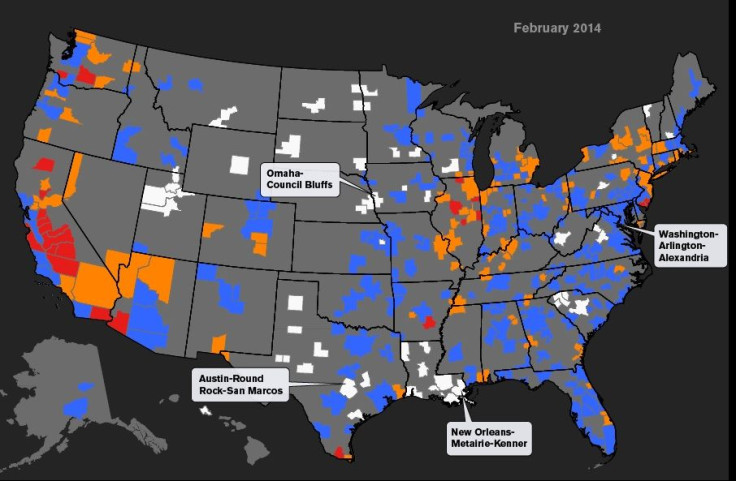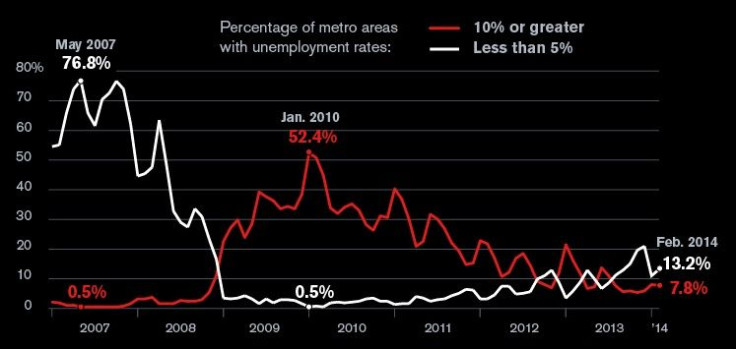Employers In Dozens Of U.S. Cities Are Facing A Problem They Haven’t Experienced In Years: Low Jobless Rates, Higher Demand For Workers

From restaurants in New Orleans to oil boomtown Bismarck, N.D., dozens of U.S. cities are seeing something that hasn’t happened since before the 18-month recession beginning at the end of 2008: more “Help Wanted” signs.

Nearly 50 of the 372 U.S. metropolitan statistical areas now have an unemployment rate below 5.6 percent, according to an analysis of Bureau of Labor Statistics data by Bloomberg. This is the level the Federal Reserve calls full employment, or a statistical tipping point that delivers more negotiating power to jobseekers and compels employers to sweeten their job offers.
Metropolitan statistical areas are the more densely populated parts of the U.S. that encompasses usually two or three cities and their surrounding areas. They’re defined by the Office of Management and Budget and used by government agencies and academics to measure regional demographic and economic variations.

The current U.S. shale oil boom has sent demand for work in that industry skyward since 2009 and Texas and Louisiana have reaped the greatest benefits. Nationwide 17 of the current 49 metro areas now technically at full employment are in these two energy-rich states. The energy boom has also lifted jobs prospects in Northwestern Utah around the Unita Basin. The growth seen in oil and gas exploration has ancillary effect in local economies, lifting demand for services tightening the local labor markets.
Nationwide unemployment remained unchanged at 6.7 percent in March but labor force participation increased to a seven-month high of 63.2 percent. That means more people either found jobs or were encouraged enough with local conditions during the month to begin looking for work again.
The country is still about 200,000 jobs shy of recouping the 8 to 9 million jobs lost in the last recession and the labor force participation rate is still below the 66 percent rate from before the last recession.
Currently, 29 metro areas are facing jobless rates above 10 percent; a dozen of them are in California, the data show.
© Copyright IBTimes 2024. All rights reserved.












